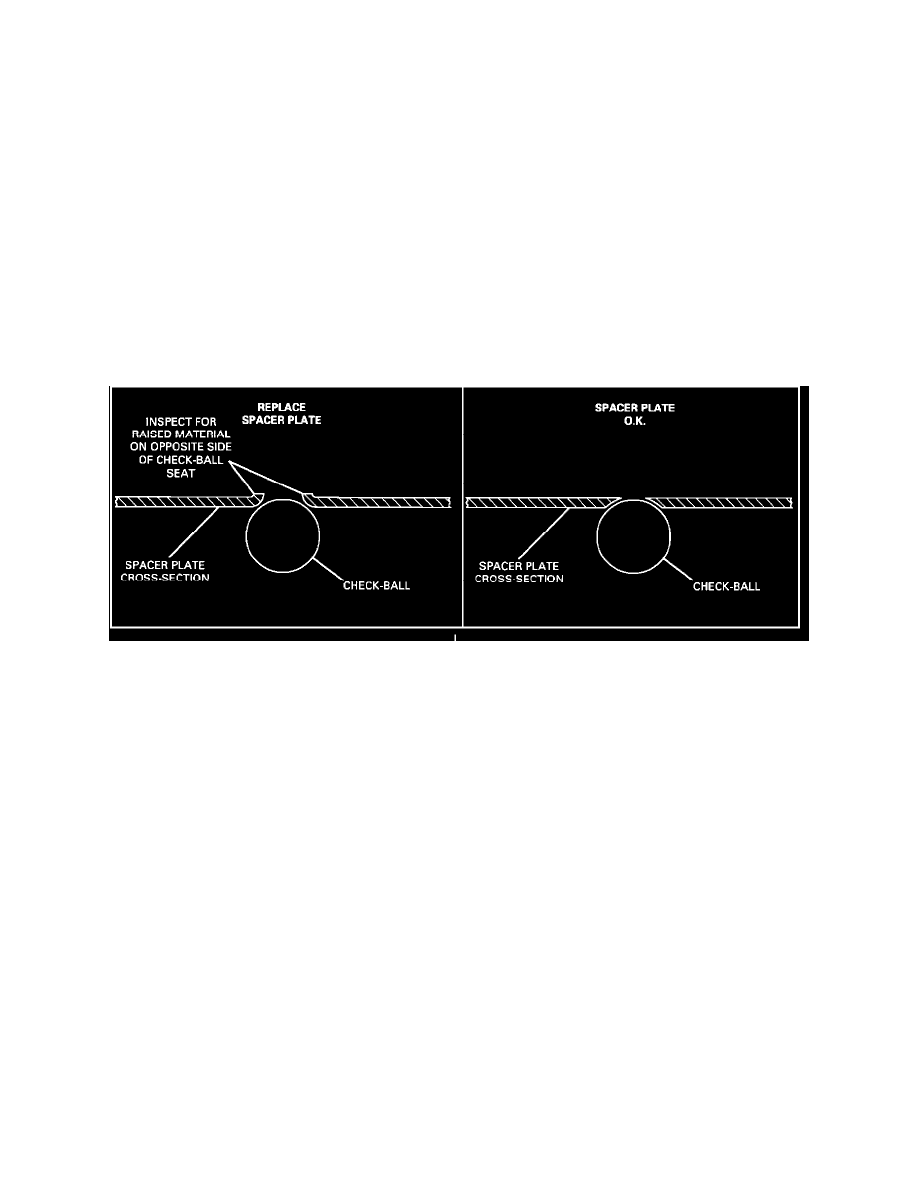Fleetwood V8-368 6.0L VIN 9 FI (1982)

Valve Body: Technical Service Bulletins
A/T - Evaluating Peened Spacer Plates
NO.: 92-I-15
DATE:
Nov. 1991
GROUP:
7
CORP. NO.: 177120
SUBJECT:
EVALUATING PEENED SPACER PLATES ON ALL CADILLACS WITH HYDRA-MATIC AUTOMATIC TRANSMISSIONS AND
TRANSAXLES
During transmission/transaxle repairs which involve valve body removal, one of the decisions that must be made is whether or not the valve body spacer
plate should be replaced due to checkball peening. This is a common situation on high mileage vehicles. Some spacer plate peening is considered
acceptable and is actually preferred due to improved checkball seating. Excessive spacer plate peening can eventually lead to a nonfunctional checkball
which could cause transmission/ transaxle performance problems. This bulletin will help you decide if a spacer plate needs to be replaced due to peening.
The following two procedures can help determine if the spacer plate can be reused. The following should be performed at all checkball locations after the
spacer plate has been removed from the transmission/transaxle. Refer to the HYDRA-MATIC AUTOMATIC TRANSMISSION/ TRANSAXLE
DIAGNOSIS and/or UNIT REPAIR Sections of the appropriate Service Information Manual for R&R procedures, checkball locations, and functions.
Figure 1
1. The spacer plate should be inspected for raised material ON THE OPPOSITE SIDE OF THE CHECKBALL SEAT. Refer to Figure 1.
^
If the material on the opposite side is raised, the peening is too severe and the spacer plate must be replaced.
^
If the material on the opposite side is flat, the spacer plate DOES NOT need to be replaced (even if material is raised around the same side as
the checkball seat).
